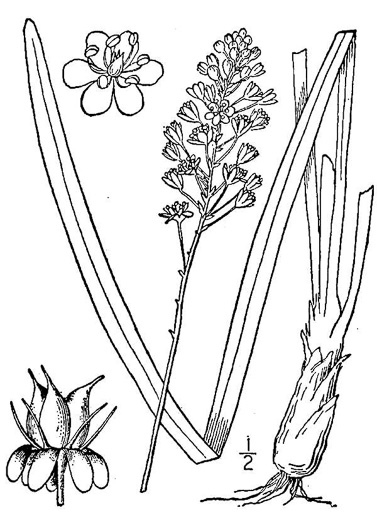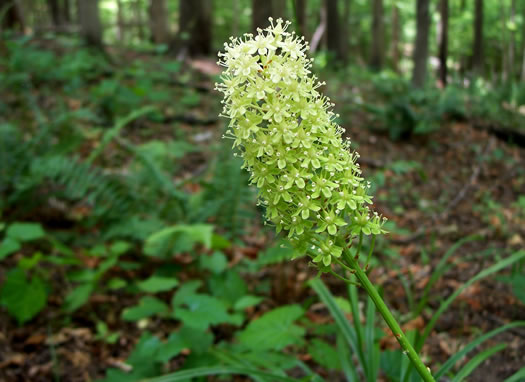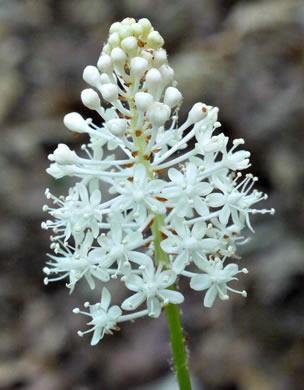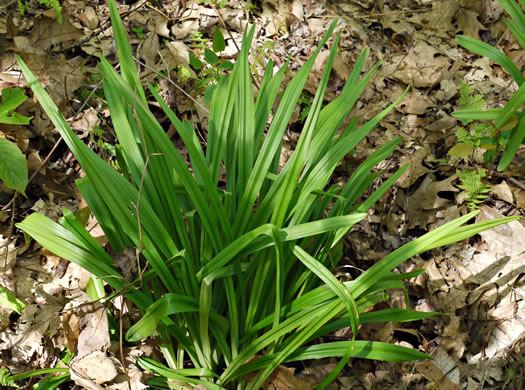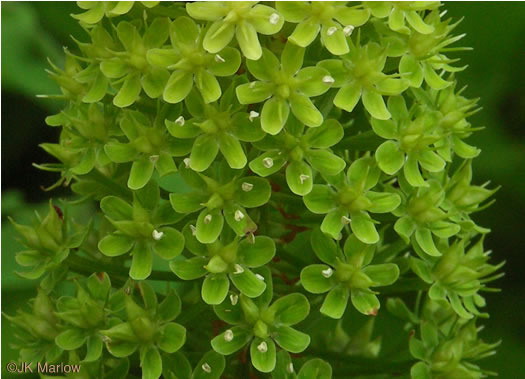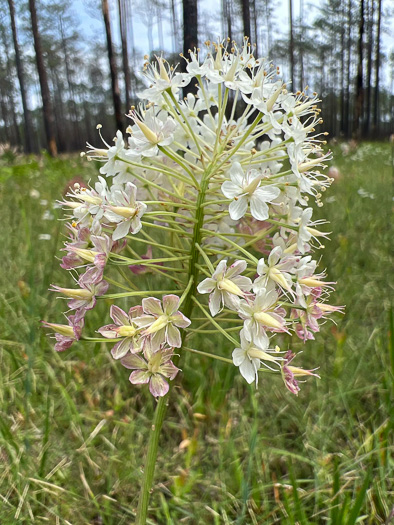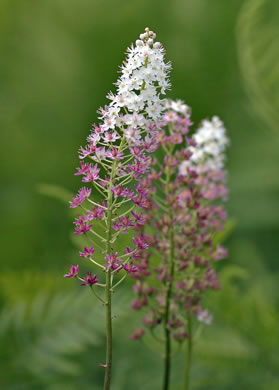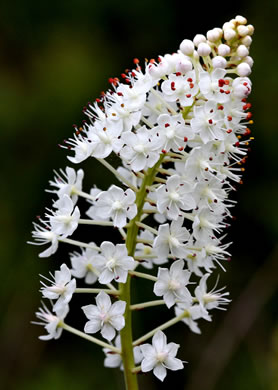Your search found 8 image(s) of Crow-poison and Fly-poison.
To see larger pictures, click or hover over the thumbnails.
To go to the plant's detail page, click its name.
 Fly-poison,
Amianthium muscitoxicum
Fly-poison,
Amianthium muscitoxicum
Terminal racemes can be conical or cylindrical, 1.25-4.5" tall, per Wildflowers in the Field and Forest: Northeastern US (Clemants & Gracie, 2006).
 Fly-poison,
Amianthium muscitoxicum
Fly-poison,
Amianthium muscitoxicum
Stem terminated by a cone-shaped, 2-4", many-flowered inflorescence, per Atlantic Coastal Plain Wildflowers (Nelson, 2006).
 Fly-poison,
Amianthium muscitoxicum
Fly-poison,
Amianthium muscitoxicum
Basal lvs' main veins parallel, diverging at leaf base & rejoining at the apex, per Weakley's Flora.
 Fly-poison,
Amianthium muscitoxicum
Fly-poison,
Amianthium muscitoxicum
The perianth turns green after pollination and remains so for some time, per Wildflowers of the Southern Mountains (Smith, 1998).
 Crow-poison,
Stenanthium densum
Crow-poison,
Stenanthium densum
Often confused w Amianthium muscaetoxicum, which has more & wider basal lvs, per Wildflowers of the Eastern United States (Duncan & Duncan, 1999).
 Crow-poison,
Stenanthium densum
Crow-poison,
Stenanthium densum
As blossoms age, they take on a purple color. — Will Stuart
 Crow-poison,
Stenanthium densum
Crow-poison,
Stenanthium densum
A conspicuous 3-5" cone-shaped inflorescence tops a nearly leafless 5' stem, per Atlantic Coastal Plain Wildflowers (Nelson, 2006).

